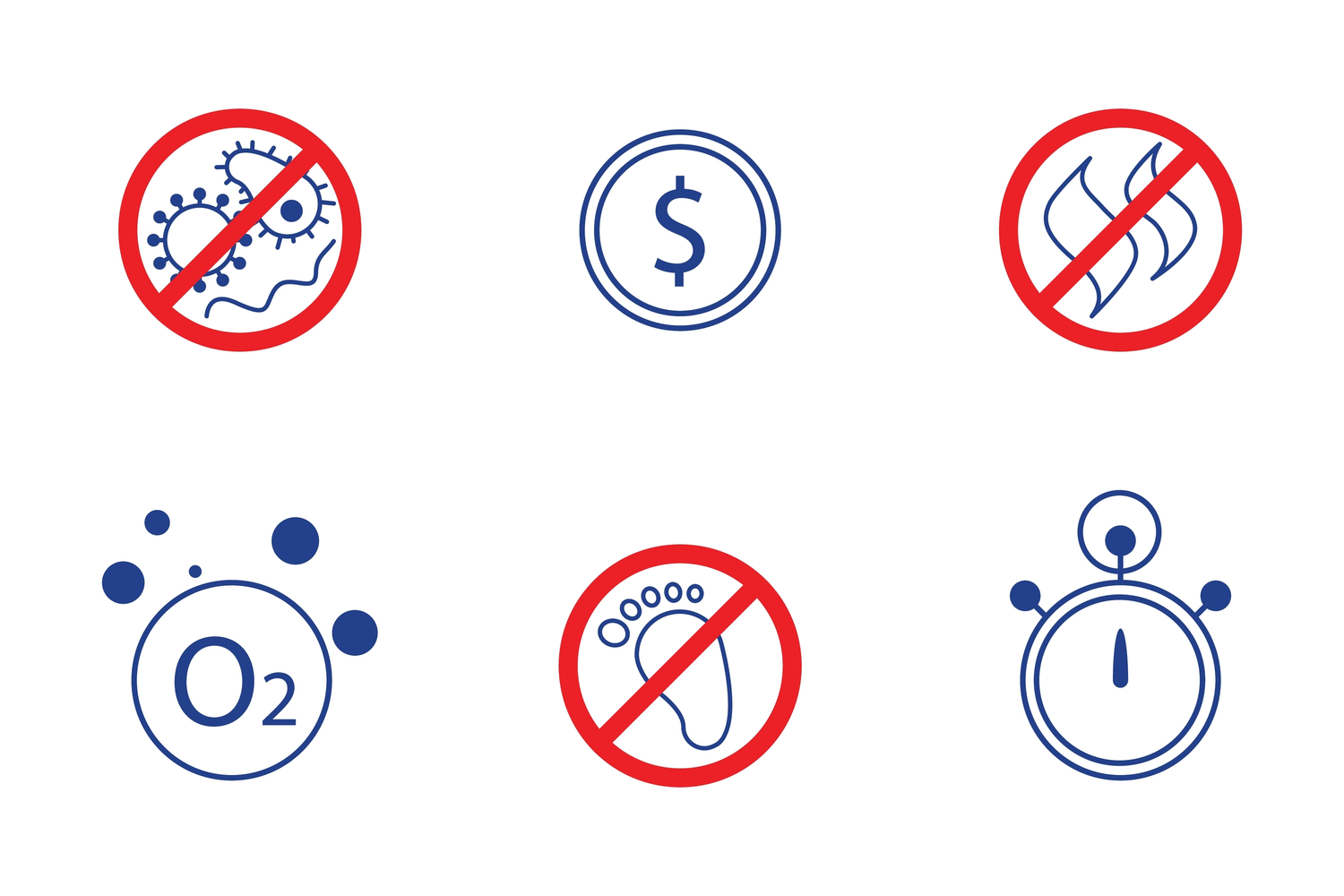What Does Ozone Smell Like?
When you step outside either just before a strong summer thunderstorm, or very soon after one has passed, that “clean” smell you may detect is caused by ozone. The scientific symbol for ozone is O3, which is comprised of three atoms of oxygen. The air we breathe, normal oxygen, is composed of only two oxygen atoms, O2. There is a protective layer of ozone surrounding the Earth that reduces much of the sun’s harmful UV rays and protects Earth’s life forms; plant, animal, and human. Ozone gas cannot be seen by the naked eye, but sometimes it can be detected by its smell.
Ozone and Earth’s Atmosphere
We live at the bottom of an invisible “ocean” of air called the atmosphere. Although the Earth’s atmosphere is made up of five distinct layers, we are only concerned with two of the layers, the stratosphere and the troposphere:
Stratosphere - The stratosphere is situated between 6 and 30 miles above the planet’s surface and is roughly 22 miles thick. The ozone layer is contained within this layer of our atmosphere. This ozone layer protects life by absorbing the majority of the sun’s UV rays, preventing them from reaching the surface of the planet. The strong UV radiation that it blocks can cause health issues like skin cancers and cataracts.
Troposphere – This is the innermost layer, the layer that we all live in and contains the air that we breathe. It is between 5 and 9 miles thick. When ozone is present in the troposphere, it is considered an air pollutant, much like emissions from cars and factories. Ozone gas at ground level can cause serious health affects. Higher daily ozone concentrations are associated with increased asthma attacks and increased hospital admissions.
The Distinctive Smell of Ozone
Many people say they can smell rain coming. What they smell is ozone. A thunderstorm creates downdrafts that often carry O3 from higher altitudes down to nose level. Lightning can sometimes “rip” oxygen (O2) molecules into separate atoms, which may then recombine to form small amounts of ozone (O3). Ultraviolet light in the atmosphere is also known to cause O2 molecules to split and allow ozone formation. What is amazing is that the human nose is capable of detecting very small amounts of ozone in the air, in concentrations as low as 10 parts per billion (PPB).
Here are some of the different ways people describe the smell of ozone:
- Pungent, or strong
- Chlorine-like
- Metallic
- Burned wire
- Electronic sparks
- Clean
How Does Ground-Level Ozone Form?
Tropospheric ozone is created by chemical reactions between oxides of nitrogen and VOCs (volatile organic compounds). These chemical reactions take place when pollutants emitted by automobiles, factories, and other sources react in the presence of heat and sunlight. High temperatures can accelerate this chemical reaction and as ground-level ozone builds up, it can reach unhealthy levels.
Groups of People Most at Risk to Ozone Exposure
Ozone can be dangerous to all of us, but certain groups of people are more at risk than others. These include:
- Young children
- Asthma sufferers
- People with existing lung diseases (e.g. COPD)
- Older adults, especially those over the age 65
- People who work or spend a lot of time outdoors
- Anyone who has vitamin C and E deficiencies
Symptoms of Ozone Exposure
Even if you are not in one of the at-risk groups list above, breathing in high concentrations of ozone can affect your health in negative ways. These are some of the signs and symptoms of such exposures:
- Feelings of irritation in the eyes, nose, or throat
- Shortness of breath
- Chest pain
- Coughing or wheezing
- Lack of energy
Long-term exposure can lead to the susceptibility to developing asthma or pneumonia. Breathing in ozone can scar your lungs, making it difficult to breathe deeply. It can also reduce the ability of your immune system to fight off infections.
Ozone and the Restoration Industry
Whether your home has been damaged by fire or water, ozone can be an integral part of the disaster restoration process. At Water Mold Fire Restoration, we use ozone treatments to assist in eliminating odors caused by soot, smoke, mold, and sewage damage.
Ozone is especially useful for fire restoration. Using it at the beginning of the work in a home that has been damaged by smoke and soot will reduce odors a make a safer environment for you and the restoration contractor to assess the extent of damage to your home and personal possessions. After all fire-damaged components have been removed and/or cleaned, ozone can be used as a final-step smoke odor eliminator. Ozone will not work as a final-step deodorizer if the source of the odors (charred wood, soot, etc.) hasn’t been removed first.
Ozone and Mold Removal
People ask if ozone will kill mold. The answer is “yes”, but there are a lot of limitations. Ozone will not penetrate walls, floors, or other surfaces. It will reach into nooks and crannies that are difficult to reach, but it will only affect airborne and surface particles. While it will kill mold and make mold spores inactive, it will not remove the mold or spores from your home’s environment. And according to the Environmental Protection Agency (EPA), being exposed to even dead or inactive mold and mold spores can negatively affect a person’s health.
Ozone: Leave it to the Pros
Exposure to ozone is a serious concern. Ozone is a toxic gas. When used for restoration purposes, the concentration level needed is unsafe for human habitation and treatments must be done while the home is unoccupied. Four different government agencies have restrictions on ozone exposure. They are the EPA, the Food and Drug Administration (FDA), the Occupational Safety and Health Administration (OSHA), and the National Institute of Occupational Safety and Health (NIOSH). It is dangerous to use an ozone generator for too long or at too high of a concentration level. Irreversible damage could occur to furnishings and possessions. You should not attempt to use ozone without proper training.
If your home has been involved in a disaster, contact Water Mold Fire Restoration before attempting to use ozone as an odor remover. We can be reached 24/7 at 800-905-0277 or at help@watermoldfire.net. Our initial consultation is free of charge.








